Jumping into freelancing is pretty thrilling, but let’s be real—it can be a bit tough, especially if you’re just getting started.
If you’re new to freelancing, the idea of snagging well-paying gigs and figuring out how much to charge might seem a bit overwhelming.
No need to stress, though.
In this guide, we’re going to reveal some tricks and tips that are perfect for freelancers who are just starting.
You’re going to learn how to not only get more jobs but also feel super confident about charging higher rates.
Ready to uncover the secrets to success and boost your freelancing journey?
Let’s dive in. 🚀
STEP 1: Choose a Market.
Why choose a market?
(1) It’s easier to find clients.
(2) You position yourself as an expert and authority.
(3) You create a clear system for your service since you are focused on delivering the same offering to different people rather than doing something new for every client.
Perhaps you’re a writer.
A writer for whom?
Perhaps you’re a VA.
A VA for whom?
Perhaps you’re a social media manager.
A social media manager for whom?
You may say…
For everyone who needs my service.
You may be versatile in your field.
You know a little bit of this, that, and the other.
But here’s the problem.
You’re a jack of all trades, master of none.
What’s wrong with that?
See, for someone who has a specific problem, for example, a heart problem — the physical heart, that is — and it’s something serious.
Who do you think they’d choose to go to?
A general physician or a cardiologist?
They could go to a general physician, but for sure the general physician would refer them to a cardiologist.
Why?
Because a cardiologist is an expert, hence he/she would know better how to address and solve the patient’s heart issue.
Now who do you think charges more?
The general physician or the cardiologist?
The cardiologist — definitely.
Even though the cardiologist has a higher rate, we’re 100% sure the patient would still prefer to go to the cardiologist because, again, the cardiologist can address and solve the patient’s heart issue.
The same is true when it comes to freelancing.
Generalists (like VAs) typically have a range of experience and skill sets, but they typically charge lower prices.
Specialists or experts in a particular niche or skill, on the other hand, can charge higher fees because they’re in demand and hard to find.
It’s one of the keys to why some freelancers charge more than others (and still get hired) because they can position themselves as “the expert” in their chosen niche, meaning they know what to do with a specific problem.
Specializing in a particular niche makes it easier for freelancers to find clients because they know who to target. They’re not “punching the air,” so to speak.
And because they know who their target clients are, they know specifically what service to offer.
So if you’re currently a generalist — offering all services under the sun — it’s about time you became a specialist.
So choose your market.
How do you choose a market or niche?
(1) List down 3 to 5 past jobs or work experiences.
(2) List down 3 to 5 things you are good at.
(3) List down 3 to 5 things you are passionate about.
(4) List down 3 to 5 things you want to learn.
Looking at your lists, what businesses or industries come to mind?
You can also list them down, at least three.
Your answer is not final.
You can still change it later.
You can answer the following questions:
(1) Who do you want to work with? Do you want to work with big companies or small businesses and startups or maybe individuals?
(2) Are there a lot of them, and are they easy to find?
(2.1) Go to Facebook and see.
For example, your target market is podcasters.
You can see from the image below that one group has 59,000 members and another has 17,000 members.
With these three groups alone, there’s great volume for this niche.
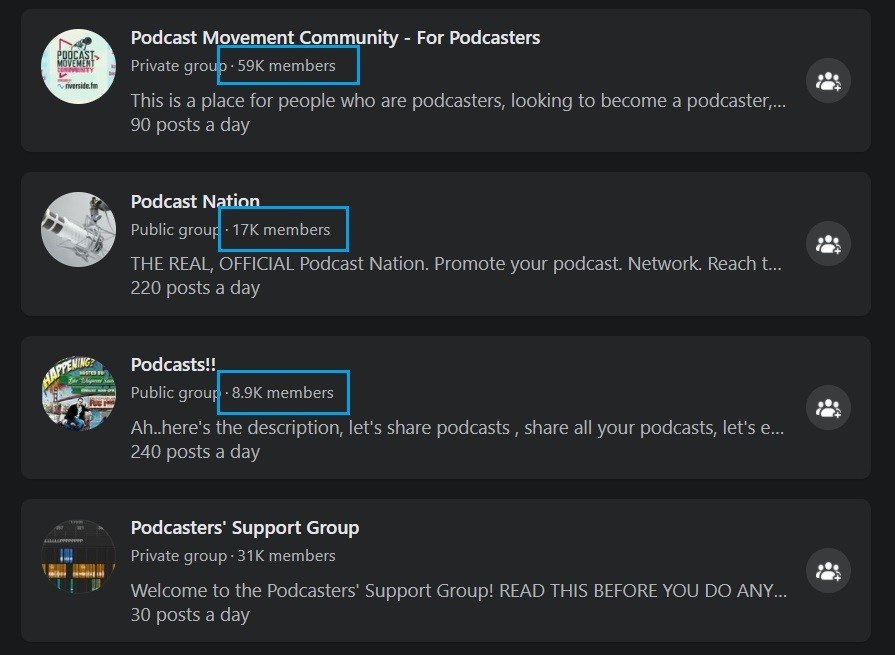

(2.2) Go to LinkedIn and see how many podcasters there are.
As you can see from the search results, there are 56,000 podcasters on LinkedIn, which is a good volume.
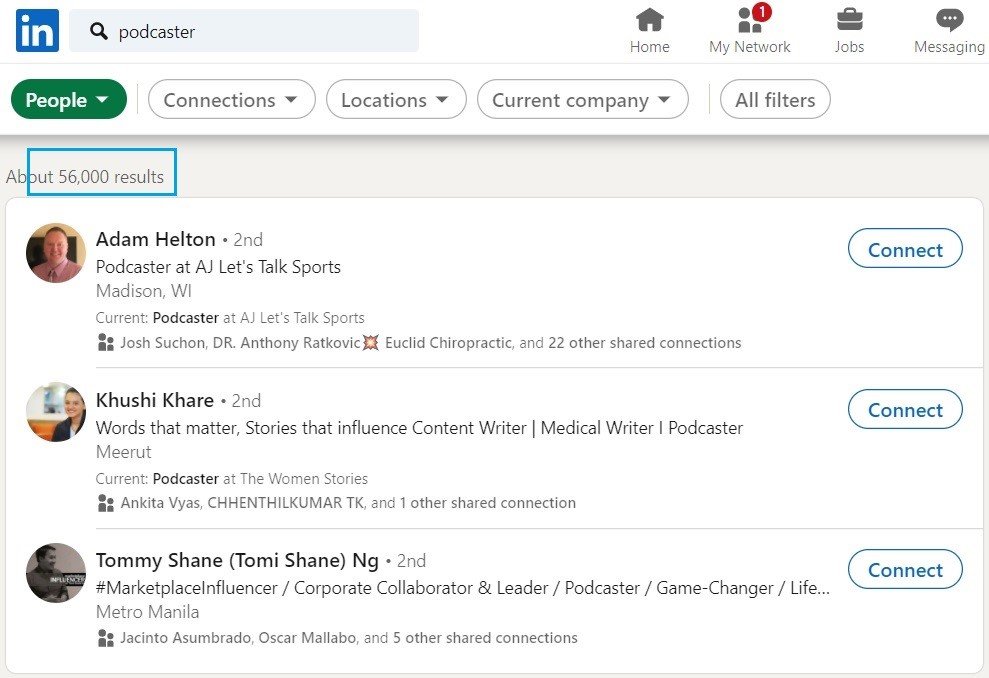

Now with that number of people in your target market, imagine how many prospects you could have.
You wouldn’t have to worry about finding your next client.
(3) Does the business or industry have a pressing need? If yes, list them down.
How do you know the challenges they face?
Examples:
Do they need more sales?
Do they need more leads?
Do they need more bookings?
Do they need more enrollees?
Do they need more subscribers?
Do they need more signups?
Do they need more patients?
Do they need more clients?
Do they need more repeat customers?
Etc.
(3.1) Do a research on Google.
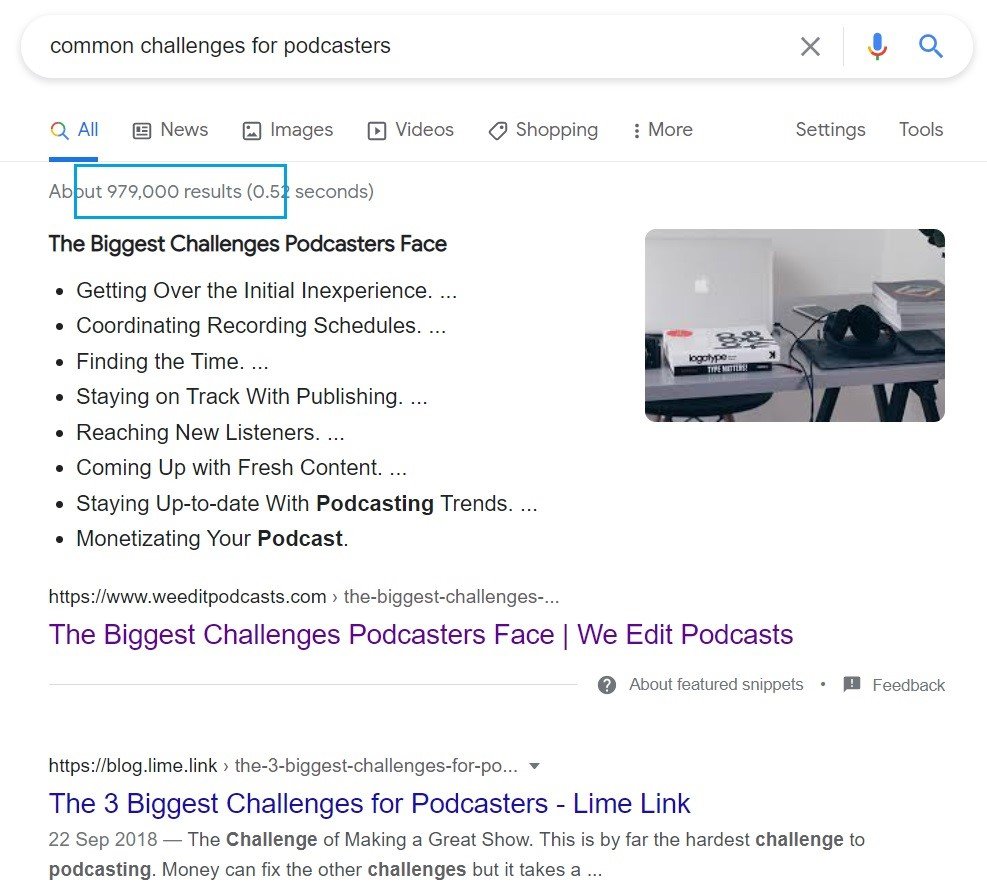

You can see that you’ve got over 900k results.
Read through a few articles to know the common challenges your chosen market faces. Then list down the problems you have discovered.
(3.2) Join a few groups on Facebook where your target market hangs out.
Make sure that you join an active group. If you see a good number of posts per day in that group, then it’s an active group.
You can join maybe three groups and ask the members about the biggest challenges they face on a daily basis.
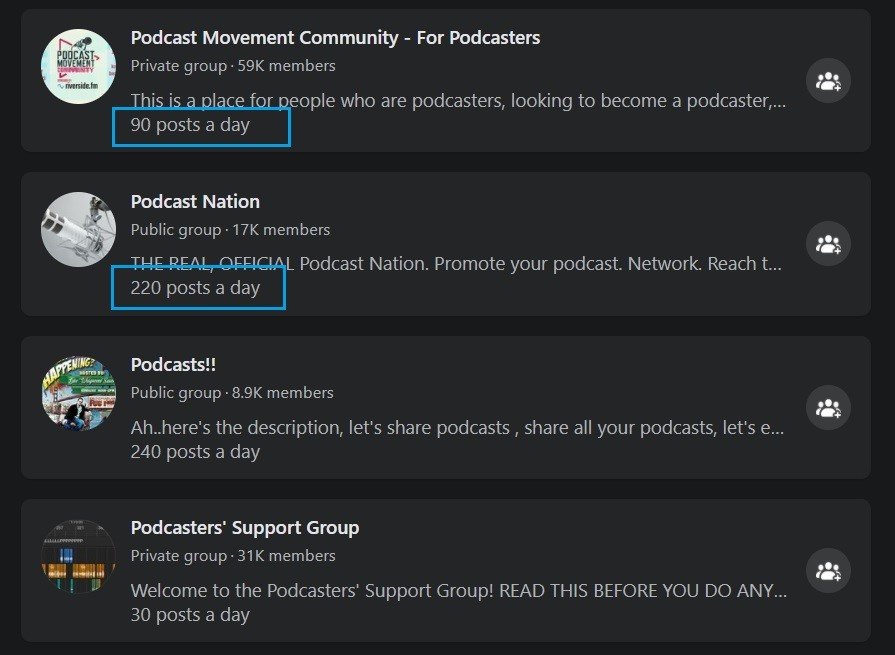

(3.3) Go to LinkedIn, connect with people in your target market, and ask if they’re willing to do a short survey or an interview, and then ask them about the biggest challenges they encounter.
You may tweak this simple script:
Hi Amy,
I saw you’re a podcaster at The Best Podcast, so I figured to connect.
I am doing a quick survey about the main challenges most podcasters have.
Would you be willing to answer a few questions?
I promise it will just take a couple of minutes.
(3.4) Quora is another good site to find pain points and solutions since it is a question-and-answer platform.


Okay, the last part of Step 1 is to look at the markets you’ve listed and choose one to move forward with.
Nothing is set in stone.
You can always go back and change it if you like.
But in the meantime, just pick one and move to Step 2.
STEP 2: Choose a skill and create an enticing offer.
At this point, you already have the following:
(1) Your target market.
(2) The problems faced by the market you have selected.
(3) Your list of skills, passions, and interests.
The next step is to focus on one problem, find out how you can solve it, and match your skills to the problem you want to solve.
EXAMPLE:
(1) Target market: Podcasters
(2) Problems or pain points:
– Coordinating recording schedules
– Staying on track with publishing
– Reaching new listeners
– Coming up with fresh content
– Staying up to date with podcasting trends
– Monetizing the podcast
– Marketing a show
(These are just a few. There could be more. But this list is enough for our example.)
(3) Skills, passion, and interest.
– Transcription
– Writing
– Social Media
– Blogging
– Video Editing
You are a freelancer. You are a one-person business.
So you only need to focus on one problem and deliver the solution exceptionally well.
Let’s say the problem you want to solve is reaching new listeners.
Now do some research on how you can help with that specific problem.
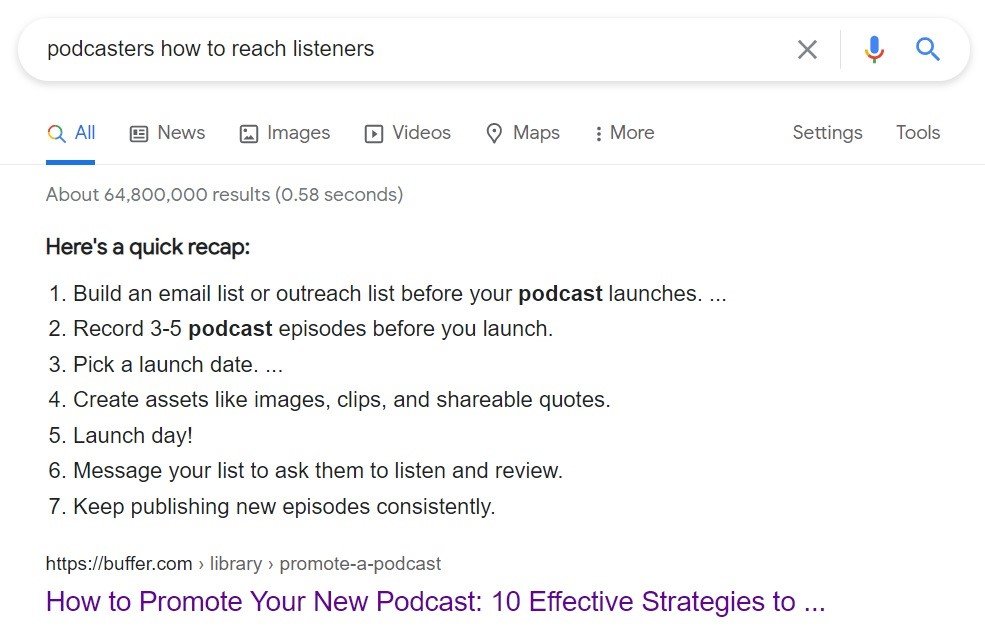

The first result gives you an article that talks about the effective strategies to promote a podcast.
From that article alone, you can gather ways to reach new listeners:
(1) Make it easy for guests to share by creating snippets and quote images.
Include a series of shareable media: pull quotes, images, links, prewritten tweets, and status updates.
(2) Promote on social media in a dozen different ways.
Share the following: rich media, soundbites, video, images, teasers, etc.
(3) Convert the audio to a YouTube video.
(4) Submit your podcast to podcatchers and aggregators.
(5) Transcribe the audio.
(6) Throw a two-week ratings party.
(7) Run a giveaway contest.
(8) Find partners to mention you.
(9) Be a guest on other people’s podcasts.
(10) Release at least 3 episodes on launch day.
Looking at other articles, here are some additional strategies:
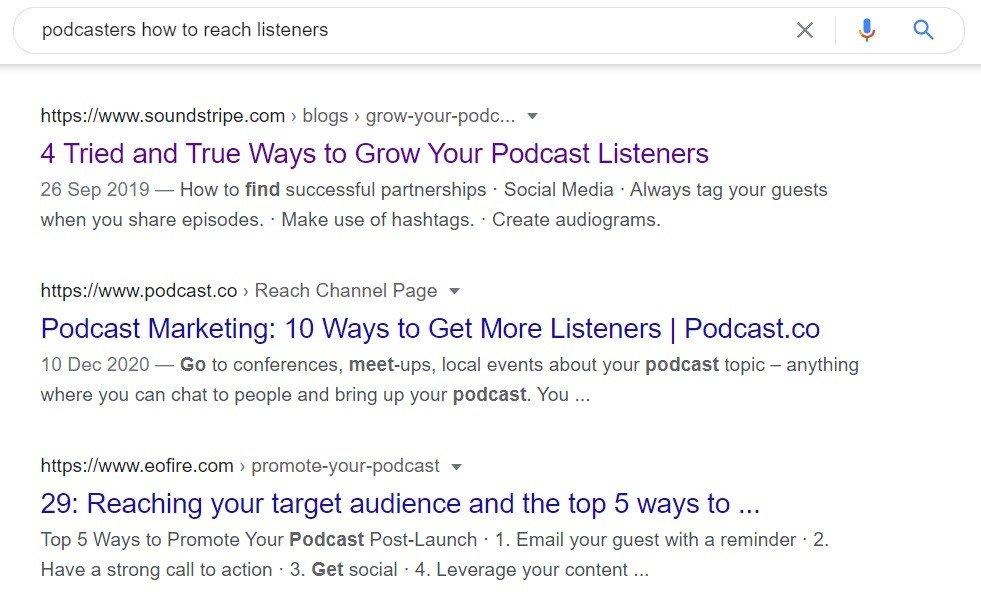

(1) Blogging and SEO.
(2) Create audiograms.
So based on our example list of skills, passions, and interests, you can do the following:
(1) Transcribe the audio.
(2) Promote on social media in a dozen different ways.
Share the following: rich media, soundbites, video, images, teasers, etc.
(3) Convert the audio to a YouTube video.
(4) Blogging.
(5) Create audiograms.
Creating audiograms may be new to you, but probably it’s something you want to learn and want to include in your service.
Remember the list you made earlier of the things you want to learn?
So you can add that if you like.
So now that you know the pain point you want to address and the possible solutions, it’s time to choose which of these solutions you want to offer.
If you can manage to do all five solutions, then why not?
By doing so, you’re able to package your services into one.
Just like restaurants offering menu bundles to create appealing deals.
Next is to validate your idea. See if your market finds value and buys into your solution.
There are two quick ways to do this.
(1) Look for competitors.
Find businesses that are already providing the service.
If there are, it means that there’s demand for the service you want to offer.
(2) Get insights directly from potential clients.
You can go back to the Facebook groups you’ve joined and private message some members or the people you’re in connection with on LinkedIn.
Run your idea by them to get their opinion if it’s something they would want to invest in.
Make it clear that you’re just validating an idea and not selling anything.
If you get positive feedback, then it’s time to put together an enticing offer, which answers the question “What do you do?”
So rather than saying, “I am a Virtual Assistant,” you say…
“I help podcasters get more listeners.”
If you were a podcaster, who would you rather hire?
Remember, people pay for the results, not the skills.
Craft your offer using one of these templates:
(1) I help (Market) (Problem you want to solve).
I help podcasters grow their audience and extend their reach.
(2) I am a (Role) specializing in (Strategy) for (Market).
I am a Virtual Assistant specializing in marketing for podcasters.
(3) I help (Market) (Problem you want to solve) using (Strategy).
I help podcasters grow their audience by repurposing content for social media.
See how you’ve transformed from a generalist to a specialist?
Step 3: Price your service.
There is no exact formula to determine how much you should charge for your freelance service.
But keep in mind that now you’re charging as a specialist.
You position yourself as an expert or authority in your chosen niche.
So charge by the value you give.
(1) Join Facebook groups for freelancers and ask other people’s suggestions. For sure you’ll find valuable insights.
(2) Read this.
If you want to get clients using freelancing platforms like Upwork, set an attractive hourly rate.
An attractive rate does not necessarily mean the cheapest.
You don’t want to work with clients who want the lowest rate available.
The value you offer should be reflected in your rate, and your great work deserves a premium paycheck.
You can look around Upwork to see what other high-rated freelancers in your industry charge for their service, and then make your rate competitive.
(3) Hourly vs Packaged — Which is better?
STEP 4: Optimize your LinkedIn profile.
LinkedIn is a great platform to find clients for your freelance business because this is the social media where a lot of professionals hang out.
So create an account on LinkedIn if you haven’t done so already, and make sure your LinkedIn profile is optimized so that people can find you, and when they find you, you’re able to make a strong first impression of who you are and what you do.
(1) Profile photo. You are building a brand and the brand is you. So get a professional headshot and use it on your LinkedIn profile.
(2) Cover photo. Choose a photo that represents you and what you do.
You can use Canva to create a nice cover photo.
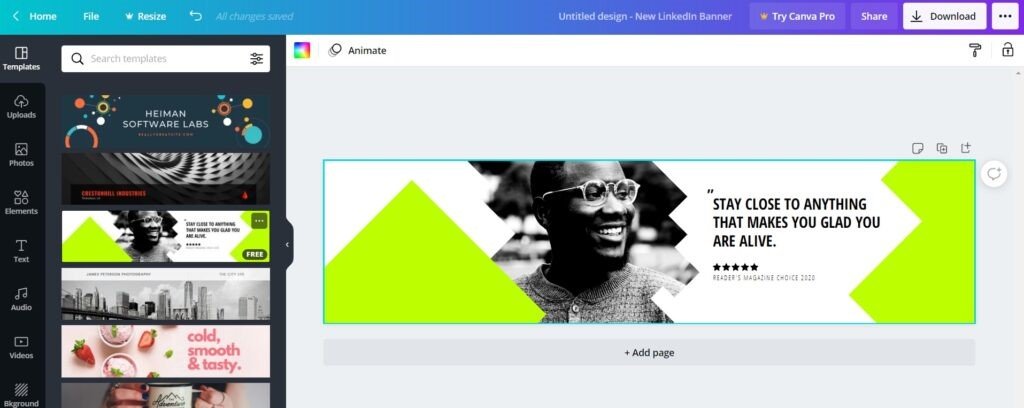

Read this article to get more tips on how to craft an amazing cover photo.
(3) Headline. This section is where you can highlight your value proposition.
Use a title/offer that is compelling to capture your visitor’s attention and make them want to learn more about you.


(4) Summary. This is your prime real estate, so be sure to include compelling points that will make your visitor want to connect with you. You can provide an overall description of what you do and how you can help your target clients.
Here is where you can also show proof of your clients’ successes, just like our sample profile.
Don’t forget to include a call to action in your summary.


STEP 5: Optimize your Facebook profile.
(1) Change your cover photo.
Again, Canva has some amazing templates you can customize.


(2) Profile photo. Choose a photo that shows your face.
(3) Description. This should contain your title/offer. You can also include a call to action.
(4) Clean your wall. Remove unnecessary posts. Your Facebook profile serves as your resume, so keep it clean and professional.
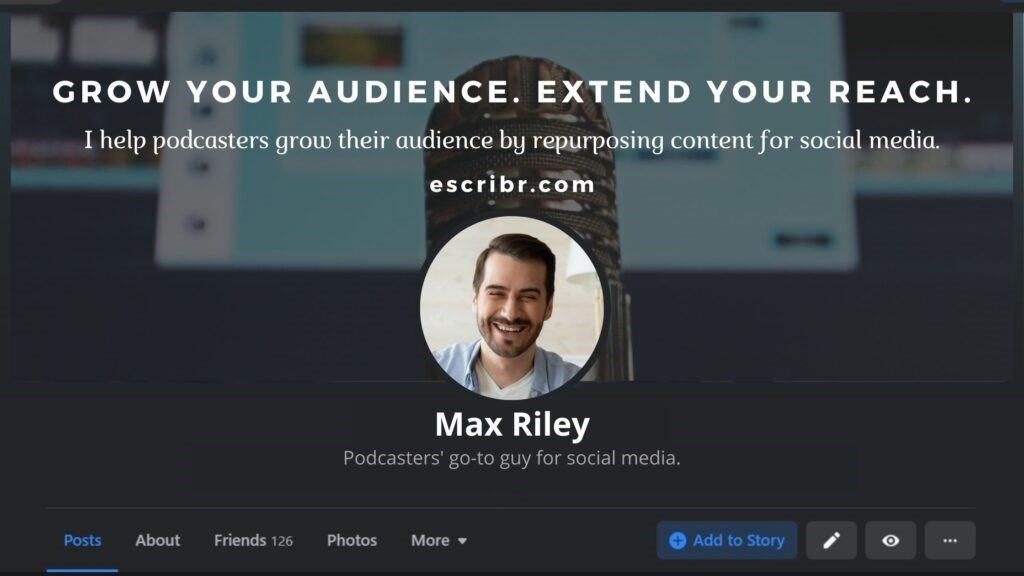

NOTE: You can do the same optimization for your profiles on Upwork, FreeUp, Freelancer, Guru, etc.
Step 6. Build your network.
6.1. Reach out to your personal network.
Reaching out to people is a useful method especially when you are just starting in your freelance business and don’t have a website, portfolio, or references to help you seal the deal.
Contact 3-5 people every day either via email, messenger, or text.
Contact the following groups of people and ask for referrals.
(1) Family and friends.
(2) Former bosses and colleagues.
(3) Connections on social media.
Sample message:
Hi Riley,
How’s everything going?
By the way, I recently went freelance and I help [Your Offer/Service].
I was wondering if you know someone who could use my assistance.
You could add this if you want to incentivize referrals:
I’m also offering a 20% commission for every referral made.
In case you know someone, do let me know.
If you’re new to freelancing and want to offer your service for free first to gain experience, you can say this:
Hi Riley,
What’s up?
Do you know someone in the [Your Target Market]?
I’m establishing my freelance business and planning to offer [Your Offer/Service].
I was wondering if you know someone who could use my help free of charge in exchange for a future case study.
6.2. Social media connections.
First things first.
(1) Make sure you have done Steps 4 & 5.
(2) Make sure you have added your skills to your LinkedIn profile.
(3) Connect with other freelancers on LinkedIn & cross-endorse each other’s skills & services. The more connections you have, the bigger the opportunity for you to appear in someone’s search results.
(4) Join related groups in your market (both LinkedIn & Facebook). Related groups means where your prospective clients hang out. Make sure that the groups are active.
Now, you don’t have to join all groups, or else you’re going to be spreading yourself too thin. Choose your top two to three groups. Choose the groups wisely.
(5) Be active and dominate your selected groups.
Why?
Your main purpose is to get people’s attention and make your presence felt.
How do you accomplish this?
(a) Like a post.
(b) Comment on a post.
(c) Praise other people’s accomplishments.
(d) Give useful tips.
(e) If they have questions, answer them.
You don’t have to be an expert to be able to answer a question because you can always ask Auntie Google.
Just type their question on Google and you’ll get several articles.
Take the gist of the answer you’re looking for and then paraphrase.
This strategy makes you an instant expert, and you also learn in the process.
Do this consistently and people will start noticing you, and you’ll always be on other people’s radar.
You can do this task for 30 minutes to an hour every time.
You can also keep track of the number of likes or comments you’ve given.
When it’s your turn to post (post something of value, not self-promotion), people won’t ignore you because they’ve already become familiar with you.
You can then friend those who are liking your posts and commenting.
(6) If you can’t find groups related to your niche, find them on Google.
You can use the keywords like “top” or “association” to search for your market.
For example, if your target market is contractors, you can use “top contractors in California” as your search term.
When you find them, check out their website and you’ll likely find details about their team members such as their Facebook and/or LinkedIn profile.
If they have email addresses, you may want to keep them also for later use.
Yelp is also a great resource to find information for service-based companies.
Create a list of all the people you want to connect with and how you can reach each one, at least 100. The more, the better.
You can use an Excel spreadsheet to do this.
Step 7. How to Get Clients
7.1. Make your Facebook profile a sales page
(1) Create a lead magnet.
What is a lead magnet?
It is an incentive or a useful resource that you give away for free in exchange for someone’s email address.
Lead magnets are great tools for growing your list and delivering value to your target audience.
Once you have their email, you can market to them forever.
Examples of an effective lead magnet:
1. Guide or mini e-book
A guide is a multi-page PDF that teaches something to the reader. This is a perfect lead magnet because it covers the topic in depth.
This doesn’t have to be too long. You just want to help the readers with a few key things they could learn.
It usually has the following:
- a cover page with the title
- a welcome page with a personal note
- 2-5 pages of content
- a closing page that invites your audience to take the next step with you. For example, connect with you on social media or book a free consultation or ask you anything — whatever you like them to do after reading your content.
2. Case Study
This is where you feature how so and so increased their sales by x percent by using your method.
If you can write a case study that outlines the specifics of how someone got the results (but be careful not to share your secret strategy), you’ll have a tremendously inviting lead magnet.
3. Checklist & Worksheet
A checklist or worksheet is one of the easiest lead magnets to create, and yet it’s a very valuable lead magnet because with this, you can teach your process and approach behind a topic.
Example: A checklist where you list down 10 steps to optimize a Pinterest profile.
This would be good for businesses and brands looking into Pinterest marketing.
4. Video Training
A video training is a pre-recorded video that your visitors can access. Video trainings can be very valuable. Keep the video short, perhaps not longer than 30 minutes, and focus on a juicy question or problem your reader is trying to solve.
Other lead magnet ideas:
- Newsletter
- Template
- Discount
- Swipe file
- Cheat sheet
- Webinar
- E-mail challenge or course (you need an email sequence for this)
- Quiz
- Free consultation
Here’s an example of an amazing lead magnet.


If you don’t want to create your lead magnet from scratch, you can get PLRs or Private Label Rights. These are ready-made digital products that you can claim as your own.
You can get PLR products for free or at very low prices.
Places where you can get PLRs:
For example, if you’re a Social Media Manager, you can download these Instagram Guides, edit them to have your personal touch, put your name on them, and voila!
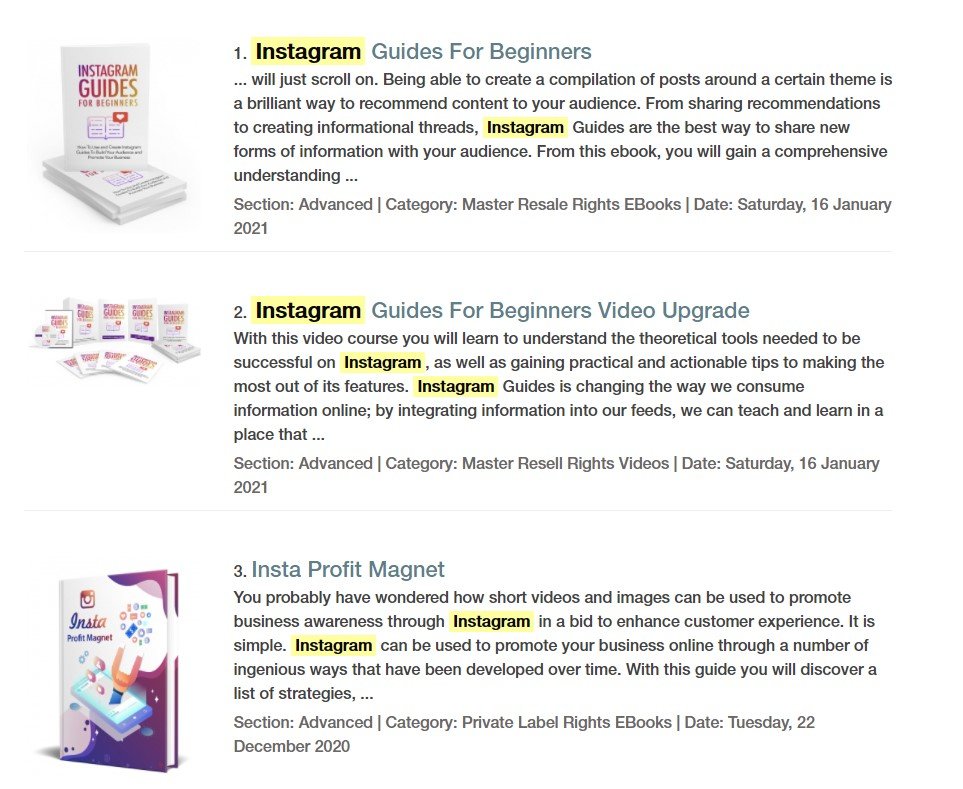

You have a lead magnet that you can give away to your target market in exchange for their email address.
Just be very sure that it’s something of value to your target audience.
(2) Create Your Landing Page.
A landing page is also known as a lead capture page. It is a single web page that is designed to convert visitors into leads or potential clients.
Sign up to ConvertKit here for free.
After you’ve signed up, log in to your account.
(3) Present your lead magnet in your Facebook cover.
You can use Canva to create your Facebook cover.
Example:
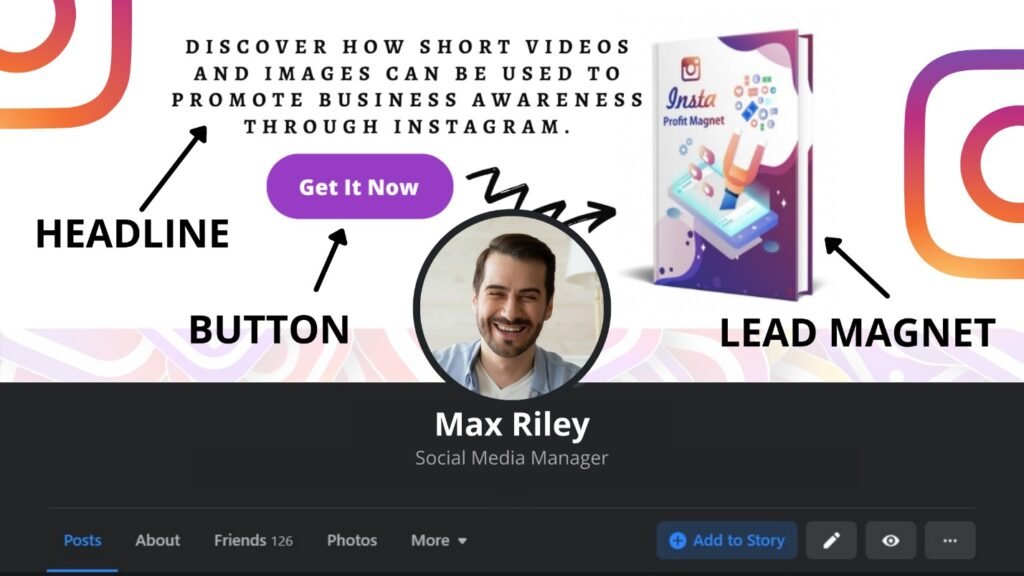

(4) Write a persuasive call to action.


When people click the “Get It Now” button (or anywhere in your cover photo), they’ll see the description section. So be sure you’ve added a persuasive headline and your landing page’s URL in that section.
You can also insert emojis to make it more eye-catching.
Just copy and paste emojis from getemoji.com.
(5) Make sure your Facebook profile is optimized. If not, go back to Step 5.
Also, make sure that your call to action is placed on your profile photo, similar to what you did in your cover photo.
You may not realize it, but people click on profile photos all the time.
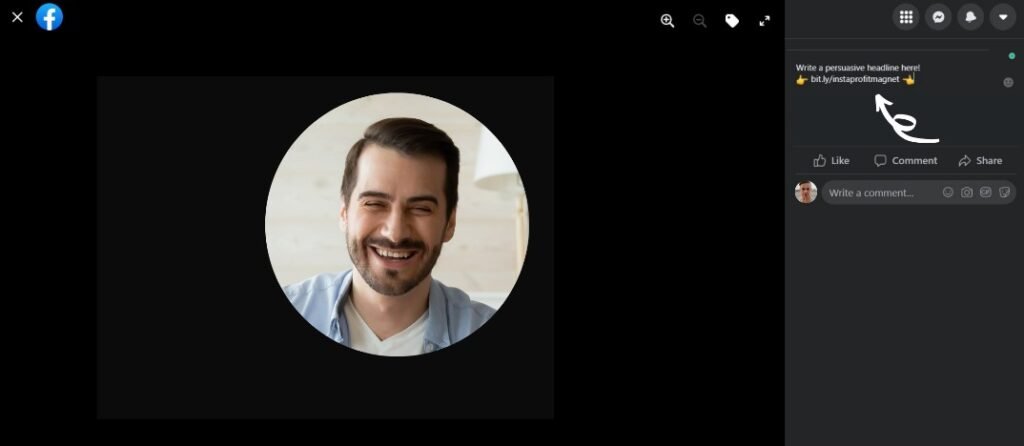

Complete the Intro section of your FB profile. Everything should include information about you and your freelancing business.
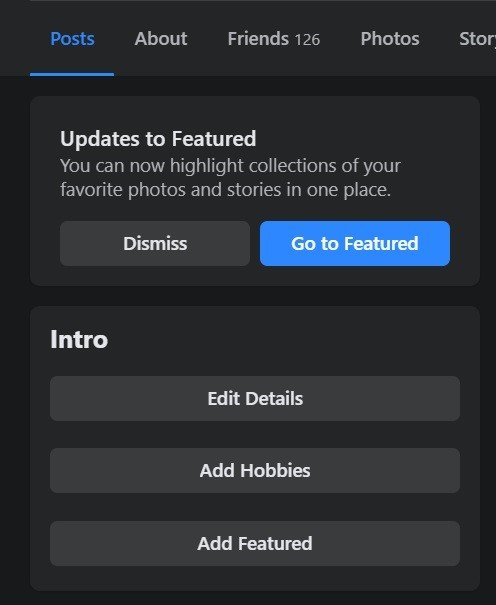

(6) Drive traffic to your Facebook lead magnet.
Three ways you can accomplish this:
1. Join groups where your potential clients hang out and engage.
Choose your top 3 groups and be active in those groups.
We’ve already mentioned this before, but it’s worth repeating.
2. Be active and dominate your selected groups. Your main purpose is to get people’s attention and make your presence felt. Interact with other members and provide value. This is the best way to build a following and grow your influence and eventually monetizing, which is to help people and ask nothing in return.
(a) Like a post.
(b) Comment on a post.
(c) Praise other people’s accomplishments.
(d) Post content and give useful tips. This is a quick way to establish yourself as the authority on specific topics related to your business.
Facebook post ideas:
– motivational quotes
– small wins in business
– life lessons/business lessons
– recommendations
– useful tips and hacks
– help me decide
– take a poll
– testimonials
– memes
– story posts
(e) If group members have questions, answer them.
You don’t have to be an expert to be able to answer a question because you can always ask Auntie Google.
Just type their question on Google and you’ll get several articles.
Take the gist of the answer you’re looking for and then paraphrase.
This strategy makes you an instant expert — and you also learn in the process.
3. You’ll meet potential clients in these groups. Send them friend requests. Do not send a message if your request is not accepted.
Once your friend request is accepted, send an initial message and start building a relationship.
Hey Bob,
Thanks for accepting my friend request.
I’m glad to connect.
Do these consistently and people will start noticing you.
Again, PROVIDE VALUE. We can’t stress this enough.
And for sure, they’ll be curious to look at your profile. Then boom! You’ll have someone pulled by your lead magnet.
Creating your Facebook profile as a lead page is a great strategy for getting clients without being salesy.
(7) Send email messages to your list on a regular basis.
It’s very important that you continue building relationships with them.
Use the Broadcast feature of ConvertKit to send a tip, an announcement, a promo, etc. to your email list.


NOTE: Master creating your Facebook lead page and you can even make this your freelance service if you’re a newbie and is still on the fence of what service to offer.
7.2. Reach Out to Potential Clients on LinkedIn
(1) Again, make sure that your LinkedIn profile is optimized.
If not, go back to Step 4.
(2) Connect with those in your existing professional network.
(3) You can ask for recommendations from your connections and reciprocate by giving them recommendations as well.
(4) Search for relevant connections. You can use LinkedIn’s advanced people search to find your ideal clients. You can even refine your search by location.
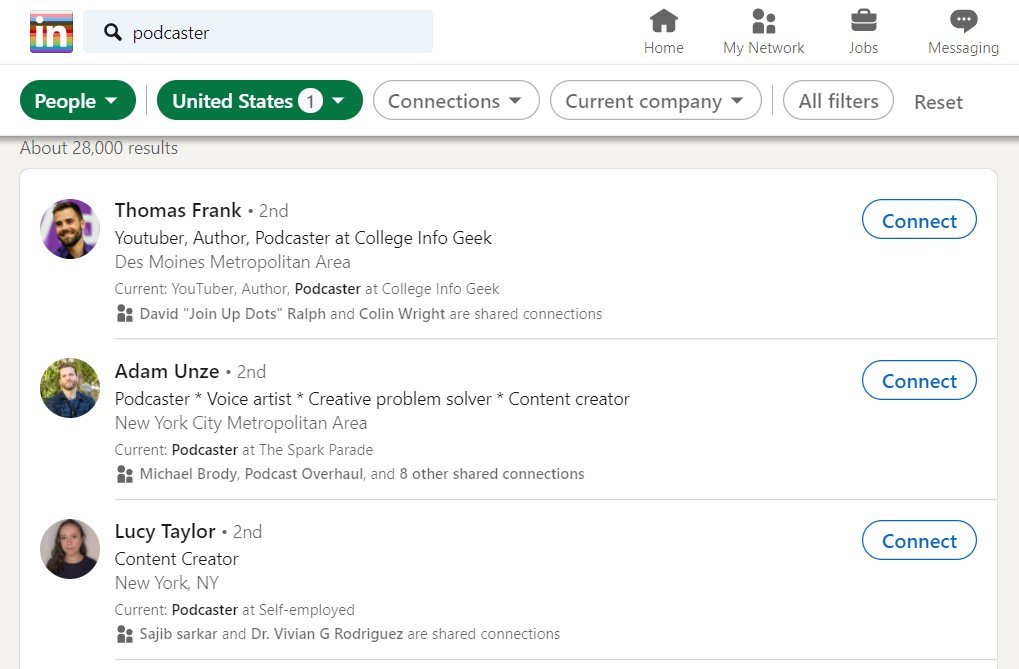

Don’t connect with everyone on the page. Send 25-50 requests per week.
You could be penalized by LinkedIn if a lot of people mark your request as spam.
(5) Visit the profile of each possible new lead and note something unique about their business or profile that you can mention in your connection request.
(6) Send a connection request to the possible lead. You can also add a note with your connection request because unlike Facebook, you can directly message anyone on LinkedIn. Use this to introduce yourself and what you do. Add the unique personal note you gathered in Step 5.
Example:
Hi Bob,
I saw that you [unique point about the person’s profile]. I am a [your industry or what you do] and felt like we could get a lot from connecting.
I look forward to hearing from you!
Regards,
Robin
(7) Prepare three follow-up messages that you’ll send to new connections who approve your request.
Message 1 – Thank you message: Connect on a personal level. Offer something of value that’s very relevant for their business. Ask them if they have any questions about your area of expertise.
Example:
Hi Bob,
Thanks so much for connecting with me here on LinkedIn.
I think you’d find this [lead magnet description] useful.
You can [read/watch/download] it here: [link to lead magnet]
[Line or paragraph that will make them curious to check it out — make sure it’s all about them].
Let me know what you think about it.
Robin
Message 2 – Offer or free work: Send an explanation and link to your offer page or maybe a free work sample.
Note: You want to format your offer link correctly. Start your offer link as https:// so that it’s clickable and your visitors will not be taken to an error page.
Message 3 – Final message: If you haven’t received a reply, mention that this is going to be your last message, and you’re not trying to be salesy. They probably get a lot of messages. Link to your offer one last time and wish them well.
Create a spreadsheet to keep track of the series of messages you have sent until you get a reply.
7.3. Profile Optimization and Prospecting on Freelancing Sites
(1) We’ve already covered in the earlier part of this training how to optimize your profile.
Make sure you have the following:
- Specific market
- Specific skill
- The results you can give your clients.
That’s really it.
There’s no need to talk about how awesome you are.
Focus on your clients and the benefits you can give them.
(2) Set your rate to at least $25/hour.
Even if you don’t have reviews or won jobs yet, it doesn’t really matter.
People always equate price to quality.
(3) Use SEO
Upwork is a search engine.
So just like Google, it works by identifying keywords.
Hence use relevant keywords.
Look at the job postings and see what keywords the clients are using — and use those in your headline and description.
Optimizing your profile using SEO will help you get client invites rather than sending proposals. Therefore, it increases your chance of winning a job.
(4) Aside from sending a cover letter or proposal, clients oftentimes require you to answer a few screening questions.
Sample questions:
Which of the required job skills do you feel you are strongest at?
Have you taken any Upwork tests and done well on them?
Make sure your answers stand out from the rest of the applicants.
Why?
The clients will see your answers to these questions first before they see your cover letter.
Make a good first impression because you only got one chance.
(5) Look for job posts and send a cover letter to express interest.
Things you should mention in your letter:
- Use the same words the clients used in their job posting. If they mentioned a pain point, address that and focus on their needs.
- Mention what you do and how you can help them address their needs.
- Show confidence that you are available to hop on a call and discuss how you can deliver.
(6) Write a testimonial on behalf of the client to get awesome reviews.
There are times when clients are very busy.
Help your client save time and the headache of having to write one, especially if you’re not the only one they hired.
Plus, you can craft a keyword-rich testimonial that will help future clients find you.
Example:
Hi Bob,
I know how time-consuming it is to write a testimonial, and I know you already have a lot on your plate. That’s why you hired me in the first place.
So I took the extra step and wrote one that you can easily copy and paste so long as you agree with the things I wrote.
[INSERT TESTIMONIAL]
Robin was awesome with the job. She was able to [use keywords that are related to your service and your target client].
Cheers,
Robin
AFFILIATE DISCLOSURE
This post may contain affiliate links. An affiliate means Escribr may earn referral fees if you make a purchase through our link without any extra cost to you. It helps to keep this blog afloat. Thanks for your support!







